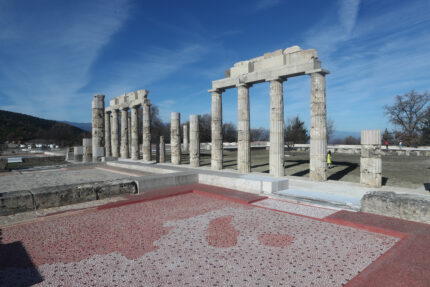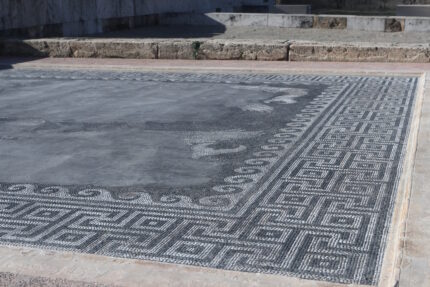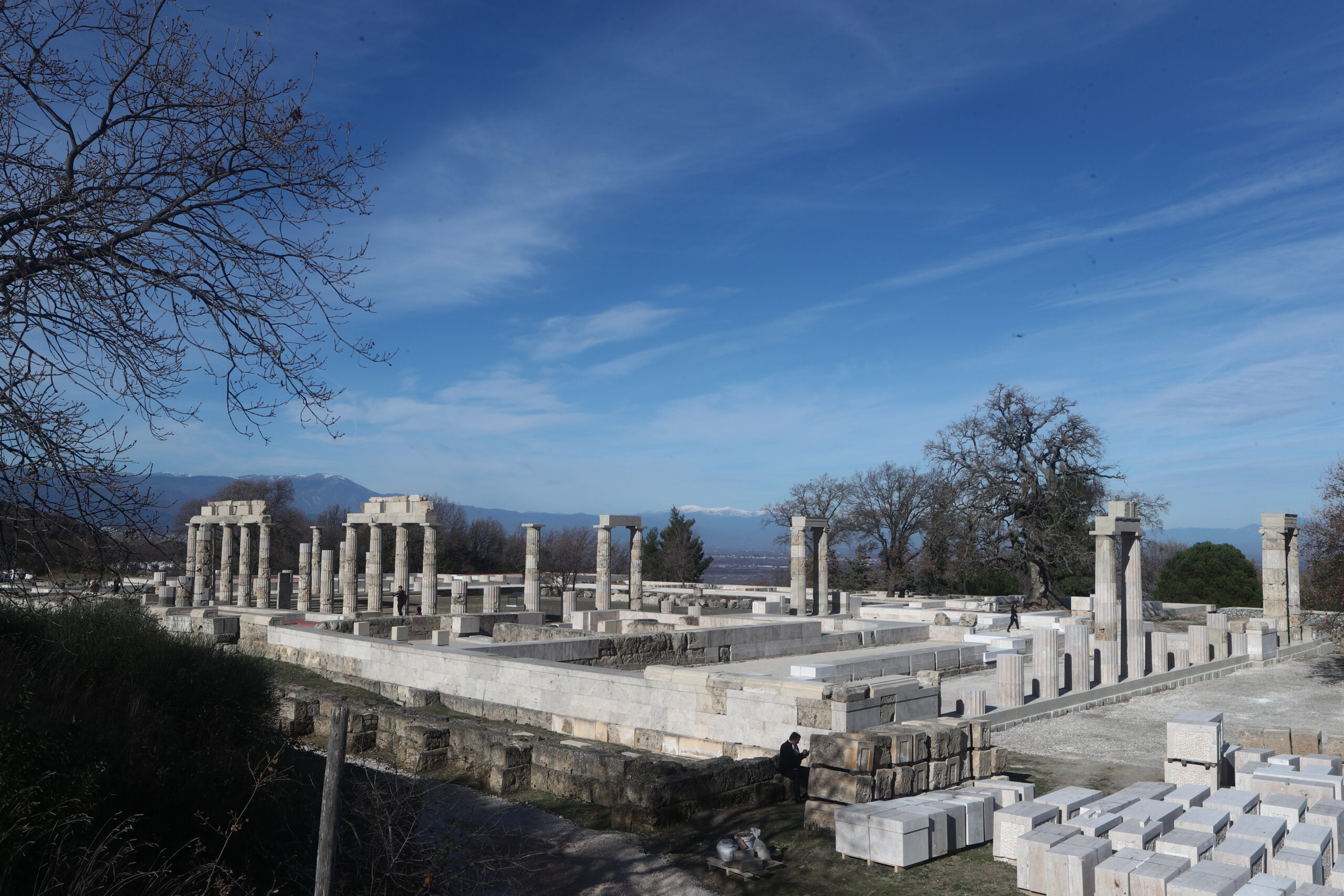The great palace built by Philip II of Macedon at Aegae, the royal capital of the Macedonian kings near modern-day Vergina, has reopened to the public after a 16-year project of repair and restoration.
Built in the mid-4th century and completed by 336 B.C., the palace was the centerpiece of Philip’s construction program that would transform Aegae into a dazzling royal metropolis. “I, the ruler, and my people coexist in this building, the palace of the Aigai,” Philip wrote in an inscription. The palace was more than 160,000 square feet in area, three times larger than the Parthenon, and was the largest building in Classical Greece. Philip spared no expense in the opulence of the materials, elegant geometry of the design and the latest in technological advancements, including an elaborate drainage and water supply system fed by mountain springs.
 It had a two-story façade with a monumental propylon (a temple entrance) opening into an enormous peristyle (row of columns surrounding an open space). The peristyle had 16 massive Doric columns on each side forming a square that was the first of its kind. The square was 43,000 square feet and could comfortably accommodate 8,000 people. It was the central gathering place for the citizens of Aegae, the political and social heart of the city. The palace offered spaces for banqueting, symposia, a library and archive, a gymnasium, a tholos (round temple) dedicated to Herakles and other structures to perform public and administrative functions of all kinds.
It had a two-story façade with a monumental propylon (a temple entrance) opening into an enormous peristyle (row of columns surrounding an open space). The peristyle had 16 massive Doric columns on each side forming a square that was the first of its kind. The square was 43,000 square feet and could comfortably accommodate 8,000 people. It was the central gathering place for the citizens of Aegae, the political and social heart of the city. The palace offered spaces for banqueting, symposia, a library and archive, a gymnasium, a tholos (round temple) dedicated to Herakles and other structures to perform public and administrative functions of all kinds.
The palace was complete in time for the wedding of Philip’s daughter Cleopatra by his fourth wife Olympias (also mother of Alexander the Great) to Alexander I of Epirus, Olympias’ brother and therefore his bride’s uncle. It was during the celebration in 336 B.C. that Philip was assassinated in the theater next to the palace. Under the shadow of the Doric colonnade of the mega peristyle, Philip’s son Alexander was proclaimed king and would go on to change the world in the 13 years remaining of his extraordinary life.
 Philip’s royal palace was destroyed after the Roman conquest of the kingdom in 148 B.C. Its prized building materials were looted for centuries and over time the location of the palace was lost under layers of earth. Its remains were discovered in 1865 and excavations uncovered more of it in subsequent decades.
Philip’s royal palace was destroyed after the Roman conquest of the kingdom in 148 B.C. Its prized building materials were looted for centuries and over time the location of the palace was lost under layers of earth. Its remains were discovered in 1865 and excavations uncovered more of it in subsequent decades.
Reconstruction began by the Ephorate of Antiquities of Imathia in 2007, and lasted to 2023. It was funded by several European Union funding programs at a total cost of 20.3 million euros. Works included maintenance, structural support, restoration, and reconstruction of the monument.
The restoration project was expanded into the surrounding complex (the 15,000 sq.m.) and the area beyond (nearly 25,000 sq.m.). Excavations and registration of thousands of portable findings and architectural components of stone (tens of thousands) were carried out on the entire site, as well as the restoration of a section of the roof of the museum’s atrium. Earth support works were also included.
Dr Angeliki Kottaridi was the scientific and administrative supervisor of the entire project at all stages, with the help of a team that included a civil engineer, an architect, archaeologists, conservators, and craftsmen. Some 70-160 people worked on the site at various times.
